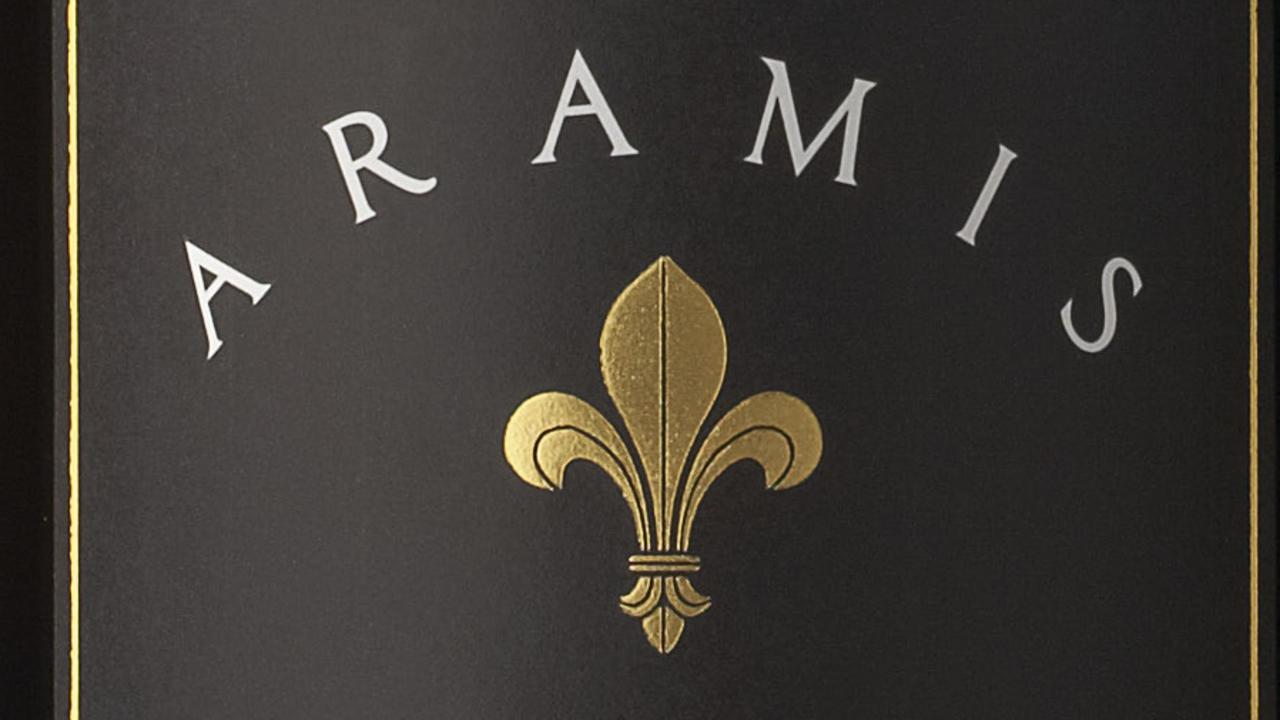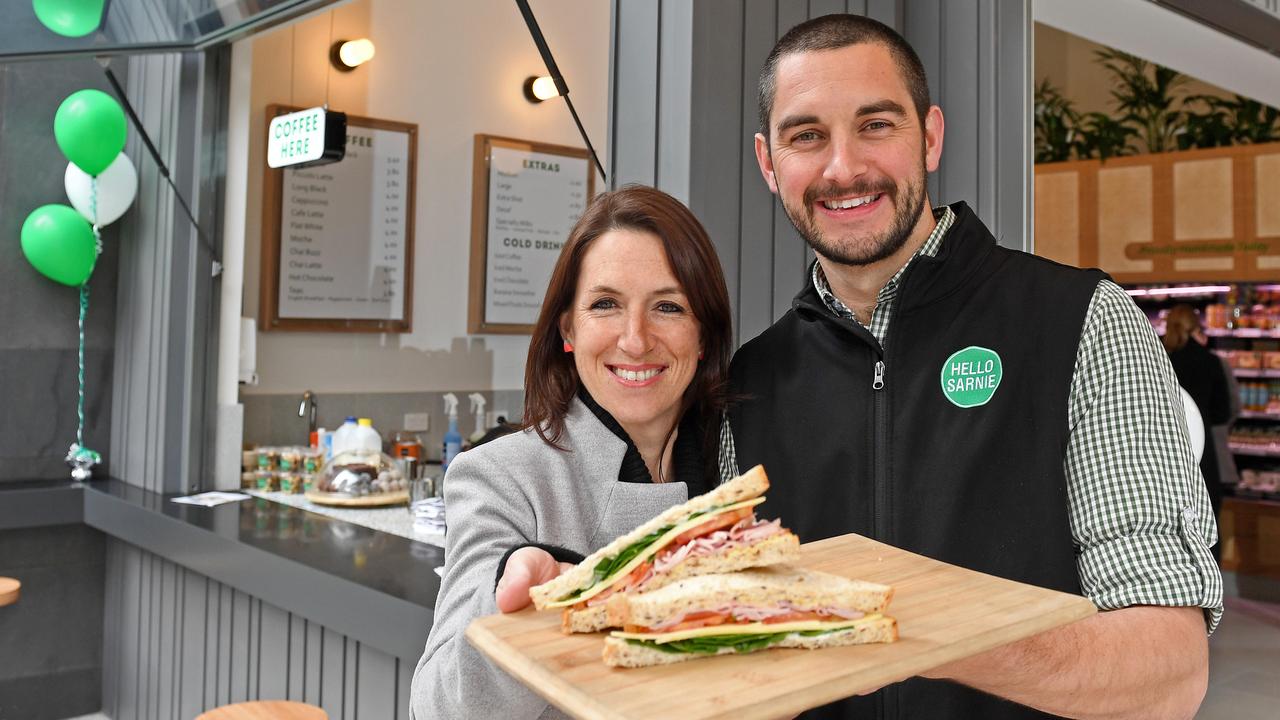Ex-Orana chef Shannon Fleming shares his tips for cooking on campfires
IN the midst of winter, everyone wants to gather around the campfire and poke at it. It’s even better if there’s food cooking on top. One of Adelaide’s top chefs has some tips to mastering the flame grill.
delicious SA
Don't miss out on the headlines from delicious SA. Followed categories will be added to My News.
THE sky is clear but an icy wind is blowing through the Adelaide Hills property where Shannon Fleming is cooking dinner for his family.
Until a few months ago, the former head chef at restaurants including Magill Estate and Orana was accustomed to being surrounded by benches of stainless steel, using the best cookware and contraptions.
Now his kitchen is a bare patch of dirt and his stove is a fire that flares with each gust. His cookware includes a rusty cauldron, a jaffle maker and a tripod with a hook. And he wouldn’t have it any other way.
Whether it’s a backyard cookout or camping trip with his family, or catering for a crowd with his new business Forgotten Seasons, Shannon reckons harnessing the most primitive of heat sources, in the great outdoors, is hard to beat.
“It’s a whole lot better than being inside in a kitchen,” he says. “And once you start cooking over charcoal and fire it’s hard to go back to a normal gas chargrill.”

Happy camper
When he was growing up, Shannon’s family holidays were normally camping trips to places including the Flinders Ranges, Tasmania and Queensland, a tradition he is continuing with his own tribe.
“So cooking on a fire brings back a lot of good memories,” he says.
“It’s a lot of fun and it brings a lot more people together. People like to sit around and look at a fire and if someone is cooking on the fire even better.”
In his professional life, Shannon began reconnecting with fire in the kitchens of Magill Estate and Bistro Blackwood, albeit in a more predictable environment.
Like many contemporary chefs around the world, he saw the terrific flavours that proper char and smoke was bringing to his food.
On the move
And cooking on fire has another great advantage: it can be taken anywhere.
“I don’t have a kitchen with my own business but I can cook with a trestle table and a fire pit,” Shannon says. “If they (the property owner) allow me to dig a hole, that’s how I’d like to do it.
“I don’t find it restricting at all. People think charcoal equals cooking meat but you can cook veg over it, fruit over it. It just expands from there.”

For the Feast of Valhalla that was part of last year’s Adelaide Hills Winter Reds Festival, Shannon prepared a Viking-style banquet for 155 people, cooking everything over coals.
The event was held only a few weeks after he left Orana and, while admitting he was
pooping himself beforehand, its success showed Shannon what was possible.
For this year’s festival, he will be catering to a smaller crowd at Ngeringa Vineyards, using fire pits established in the middle of the fields where much of the produce is grown.
Get started
While an open fire at one level is the original and least complicated source of heat for cooking, for those who haven’t grown up camping it can seem intimidating.
Now is the perfect time to start. The colder months are the best time to have people gather around a fire and you won’t have to worry about the bans that come into force later in the year. Still, it’s important to check that a fire is permitted in the area and the surrounding ground is clear and safe.
For a successful cooking fire, you will need both smaller kindling and bigger, heavier pieces of hardwood that will create the coals which provide a more controlled heat.
This takes some time, which is all part of the fun.
“Humans all want to be around the fire and poke at it,” Shannon says. “You can’t rush it. The fire needs to be going for a couple of hours. A certain amount of patience is involved.
“Even if you just want to cook potatoes,” he says, “they have to be in the coals, not a freshly lit fire.”

Keep it simple
Shannon suggests starting with a simple meal, perhaps sausages cooked in a pan, or a breakfast of bacon and eggs.
“Once people light a fire and get a little bit of confidence … they can move on to other things,” he says. One of the secrets is to divide the fire into different zones.
“Even with a small pit, you want a hot spot (with burning timber) and then a bed of coals,” Shannon says.
A larger pit will allow room for a third section, in which the heat is lowered, for cooking in a Dutch oven or slowly roasting vegies.

Most importantly, remember that you are outdoors, which means everything will taste better and normal eating conventions go out the door.
“If you are camping you don’t have to conform to having all the food ready at one time,” he says. “Who cares. It’s a lot less formal.”
Slow the go
A cast iron cauldron or Dutch oven is a worthy investment for regular campers and should last a lifetime.
The oven can be used to make everything from damper and cakes to casseroles and roasts. Larger cuts of meat can be left simmering gently through the day on a cooler corner of the fire pit.
Shannon uses his oven to cook a lamb shoulder until the meat peels easily from the bone. After searing the joint, he throws in a halved head of garlic, onion, fennel and mountain pepper leaves.
“It doesn’t need any liquid,” he says, “just the little bit of fat that comes with the shoulder.”

Veg out
Shannon uses the fire to cook a variety of vegetables in different ways. Wedges of jap pumpkin and fennel are placed directly on a bed of coals, until they begin to char, and then are moved to a grill in a cooler spot. “People muck around with pumpkin too much,” Shannon says. “Just chuck it on the fire. If you want to peel it or cut it up do it after it is cooked.
“My kids eat heaps of fennel. And charred fennel just works for me.”
Leeks also go straight on the coals until the outer layer is burnt but the insides become sweet and tender.
Potatoes, in this case royal blues, are cooked in two stages. First, they are cut into hasselback-style thin slices (don’t cut right through), rubbed in oil, wrapped in foil and roasted slowly in the coals, for around an hour and a half. Then the parcels are opened and the spuds topped with a dob of butter flavoured with garlic, capers and herbs including rosemary, oregano, chickweed, sorrel and oxalis, before being left briefly in a pan or grill.
And the pineapple that hangs from a wire over the fire?
“That’s there because it looks good,” Shannon says. “But who doesn’t love caramelised pineapple?”

Jaffle ticket
With a loaf of bread and a jaffle maker in the camping box, no one will be going hungry.
Essentially a deep, generous toasted sandwich, jaffles are a brilliant way to cook everything from eggs, to canned spaghetti, to ragu and all manner
of leftovers.
For this dinner, Shannon makes a dessert jaffle, filled with rocky-road-style mix of banana, nutella, roasted almonds, marshmallows and lilly pillies from his garden.
He also tries putting a similar combination into waffle cones, which are wrapped in foil and placed briefly on the coals.
Let’s stick together
Cutting up meat and threading it on to shashlik sticks is one sure bet for the campfire.
The smaller pieces will be quicker to cook and can be eaten in the fingers.
“In my family, if you put meat on a stick it’s a winner,” Shannon says, echoing
the experience of
parents everywhere.
Meat can be cut up and placed in a container with a marinade before going away. Just make sure to soak wooden skewers in water for at least 30 minutes before using so they don’t burn.
For this meal, Shannon has combined chicken thigh fillet with lemon myrtle, garlic and chilli but the possibilities are endless. Check taste.com.au for other ideas.

Something fishy
On other occasions, Shannon says, he will cook a whole fish on the fire.
Scale and gut a large fish, stuff with lemon myrtle and lemon slices and wrap in foil ahead of time, then cook over medium coals.
“For a whole fish like mulloway at 2-2.5kg it will take around 15 minutes on each side,” he says.
For breakfast, he likes to break eggs into a deep frying pan of bubbling tomato sugo, then finish with cheese on top.
“It’s always a crowd pleaser on a cold winter morning,” Shannon says, “and cooking breakfast over coals is one of my favourite things to do.”
Shannon Fleming cooks Fires and Feast in the Field at Ngeringa Vineyards at 5pm on Saturday as part of the Adelaide Hills Winter Reds Festival. Limited tickets left
at $120. For details and bookings go to ngeringa.com



